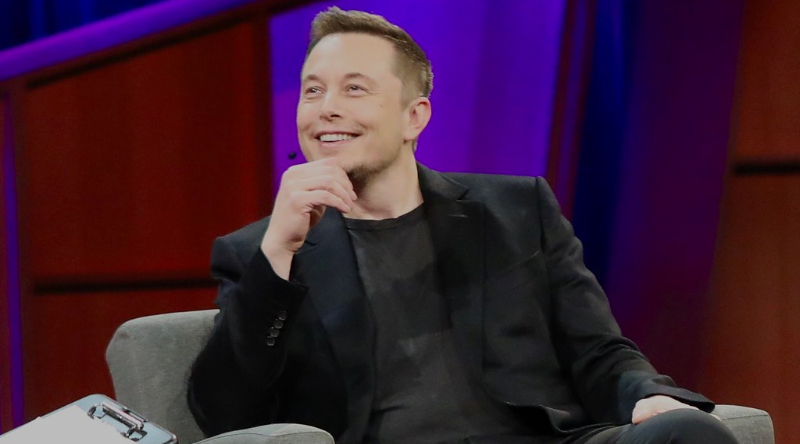Sign up for CleanTechnica’s Weekly Substack for Zach and Scott’s in-depth analyses and high level summaries, sign up for our daily newsletter, and/or follow us on Google News!

Tesla announced its Q1 2025 earnings report this week, and many questions continue to hover over the all-electric carmaker. While experiencing a momentary resurgence since the first quarter report, the company’s share prices have tumbled with a significant profit decline since the first of the year. There are many reasons for this shift in Tesla consumer sentiment, and Tesla’s competitors have swarmed in and offered alternatives to the once-dominant carmaker.
The results have been significant sales gains for Tesla’s competitors.
Had Tesla been ready to announce its long-anticipated basic, no frills Model Y, with an intended market audience of introductory EV owners, the plethora of negative vibes plaguing the company might have been softened. The hope was that a brand new group of customers would alleviate the EV maker’s falling sales and eroding market share.
As it stands, the fate of the company’s cheaper EV is uncertain, as is the next move by CEO Elon Musk. Always mercurial and unpredictable, Musk’s influence on Tesla’s future may never have been more devastating, nor more important.
The company has been teasing the idea of an affordable EV for over a year. Reuters, which originally broke the story about this Tesla production delay — one is a long series — says “the reason for the delay was not clear.” Updated reports suggest the company is looking to release 250,000 of the cheaper Model Ys in the US in 2026, followed by eventual production in China and Europe.
While not the only automaker to feel constrained by uncertainty, Musk’s influence on US President Donald J. Trump, combined with his precarious role in the Department of Government Efficiency (DOGE), has further called Tesla’s profitability into question.
“Musk needs to leave the government, take a major step back on DOGE, and get back to being CEO of Tesla full-time,” Wedbush analyst Dan Ives wrote in a report to clients on Sunday. Ives referred to it as a “Code Red situation.”
Tesla’s Competitors Make Huge Leaps
There have been fleeting assurances from Tesla that it would introduce other vehicles to its catalog in addition to an affordable EV, all of which would boost the company’s growth rate similar to 2023 levels. Instead, Tesla has focused on mass production and mass sales of two models — the Tesla Model 3 and the Tesla Model Y, and, in the immediate gratification society in which we live, those vehicles are increasing viewed as aging.
Meanwhile, Tesla’s domestic competitors have sent lots of EVs out the door as US consumers scrambled to buy before tariffs kick in and increase the cost of purchasing a new EV. Now there are many EV options for consumers to choose. Tesla’s main rival overseas, BYD, has been dominating Tesla’s market share for the last year+. BYD keeps introducing new BEV models, and their sales have been soaring. In 2024, it sold $107 billion worth of automobiles, trucks, and buses, up 29% from the prior year. It beat Tesla, which reported $97.7 billion in revenue for 2024. BYD’s net income rose 34% to 40.3 billion yuan ($593 million), beating analyst estimates of 39.5 billion yuan.
And there’s the fan favorite Nissan Leaf — one of the first mainstream electric vehicles. It’s the first EV I ever owned, and it offered a low cost, easy primer in what it meant to drive an EV. The 2026 model will be released with an expected range of 300 or more miles. It will also feature an optional larger battery pack and SUV-like profile. The current Nissan Leaf has a price tag of under $30,000, the least expensive EV on sale in the US. Its EPA range of just 149 miles in its base form and 212 miles in SV Plus form is a detriment to many drivers. Car and Driver indicates that the Leaf’s pricing may change as it enters this new generation. While nothing stays the same, including price tags, Nissan assures its fans that the Leaf will remain significantly more affordable than the Ariya, which starts at $41,160.
Other Factors Affecting Tesla’s Stability
Tariffs, threats, and turmoil: Trump’s tariff war is “fueling broad-based selling and fears of a global economic slowdown,” writes Pras Subramanian on Yahoo! finance. Tesla released a statement that outlined how uncertainty in the automotive and energy markets “continues to increase as rapidly evolving trade policy adversely impacts the global supply chain and cost structure of Tesla and our peers.” Warning of this moment in time as “a fork in the road time,” Ives mused, “if Musk chooses to stay with the Trump White House, it could change the future of Tesla,” and brand damage would continue to escalate.
Demand vs. delays: Tesla admits it has endured the worst quarter for deliveries since the second quarter of 2022. European sales have been a particular concern. Data indicate the European market is turning elsewhere for its EVs, largely in reaction to Musk’s right wing activities. Reuters reports that Musk’s attempts to influence elections have had little actual sway on voting; “instead, the most noticeable impact, so far, seems to be damage to Tesla’s brand.” Since Musk let his right wing freak flag fly, “Tesla has now unfortunately become a political symbol globally,” Ives added. “Tesla’s stock has been crushed.”
Tensions over the Cybertruck: Earlier this month the NHTSA said about 46,000 Cybertruck vehicles were subject to recall. CleanTechnica’s Steve Hanley captured the frustrations of many former Tesla fanbois. “The design was flawed and misjudged, from materials that cost a fortune to replace to confusing brake lights, and an inability to handle snow. Its most stunning failure was the decision not to consider safety regulations, which resulted in a vehicle that is not legal to drive on public roads in the UK and much of Europe because of its enormous weight and sharp edges.”
Full Self Driving seems stuck: Tesla’s commitment to its robotaxi has been tenuous recently. Internal squabbles had begun with discussions of whether Tesla can actually improve Full Self Driving (FSD) capacity so it would become an authentic robotaxi capability. More recently — and sorta amazing for this company that clings to Musk’s imagination over practical production considerations — behind-the-scenes talks based on computer modeling seem to be deconstructing the financial underpinnings of the robotaxi adventure. Is it a profitable undertaking for Tesla?
Final Thoughts about Tesla’s Competitors and the Future of the Company
Is the Tesla situation as dire as it seems? Wedbush analyst Ives thinks it is. “Anyone that thinks the brand damage Musk has inflicted is not a real thing, spend some time speaking to car buyers in the US, Europe, and Asia. You will think differently after those discussions.”
Musk gave a nod to the connection between his right-wing activism and Tesla’s downturn, but he failed to go so far as to take responsibility for brand damage to Tesla’s first-quarter sales. Musk did promise to reduce his DOGE duties in the near future. “Starting early next month, in May, my time allocation to DOGE will drop significantly,” Musk told investors on the company’s earnings call this week. He allowed, however, that he still intends to spend some 40% of his time on DOGE.
Whether you have solar power or not, please complete our latest solar power survey.
Have a tip for CleanTechnica? Want to advertise? Want to suggest a guest for our CleanTech Talk podcast? Contact us here.
Sign up for our daily newsletter for 15 new cleantech stories a day. Or sign up for our weekly one if daily is too frequent.
CleanTechnica uses affiliate links. See our policy here.
CleanTechnica’s Comment Policy



